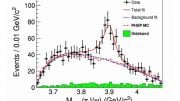
Teabag walking is a form of exercise that involves walking in slow, small steps. It is believed to increase the inefficiency of physical activity, making it an alternative to conventional forms of exercise. This method of walking was inspired by the comedy group Monty Python and has gained popularity as a way to promote public health.
A study influenced by Monty Python claims that making physical activity less efficient may have significant public health benefits.
A study published in The BMJ suggests that adults can meet global physical activity goals by walking in an inefficient manner for just a few minutes daily.
Despite efforts to increase physical activity and improve cardiovascular health in adults, the global rate of physical inactivity has remained unchanged for the past 20 years.
The inefficient walking styles of Mr. Teabag and Mr. Putey, acted by John Cleese and Michael Palin in the 1971 Monty Python Ministry of Silly Walks sketch, have been shown to be more variable than usual walking, but their energy expenditure has never been measured.
To fill this vital research gap, a team of US researchers set out to compare the energy expenditure of low-efficiency walking with high-efficiency walking.
Their findings are based on data from 13 healthy adults (six women, seven men) aged 22-71 years (average age 34) with no history of heart or lung disease, and no known gait disorder.
Height and body weight were measured and each participant was shown a video of the Ministry of Silly Walks sketch before performing three walking trials, each lasting five minutes, around an indoor 30-meter course.
In the first trial, participants walked in their usual style at a freely chosen pace. For the next two trials, participants were asked to recreate, to the best of their ability, the walks of Mr. Teabag and Mr. Putey they had seen in the video.
Distance covered during the five-minute walks was used to calculate average speed. Oxygen uptake (mL/kg/min), energy expenditure (kcal/kg/min) and exercise intensity (METs) — the amount of calories expended per minute of physical activity — were also measured.
The researchers found that only the Teabag walk resulted in significantly greater energy expenditure—about 2.5 times that of usual walking.
For men and women combined, oxygen uptake during normal walking was 11.3 mL/kg/min (or 3.2 METs), which was similar to that of the Putey walk (12.3 mL/kg/min, or 3.5 METs). However, the Teabag walk elicited an oxygen uptake of 27.9 mL/kg/min, or 8 METs, which qualifies as vigorous-intensity exercise.
In terms of energy expenditure, exchanging just one minute of usual walking style with one minute of Teabag walking was associated with an increase in energy expenditure of 8 kcal/min for men and 5 kcal/min for women.
The researchers estimate that adults could achieve 75 minutes of vigorous-intensity physical activity per week by walking in Teabag style—rather than their usual style—for about 11 min/day. And substituting usual style steps with Teabag style steps for about 12-19 min/day would increase daily energy expenditure by approximately 100 kcal.
This amount of walking in Teabag style would likely increase cardiorespiratory fitness, reduce mortality risk, and would require no extra time commitment because it replaces movement adults already do with higher energy physical activity, they add.
This is an experimental study based on a small sample, and the researchers acknowledge that some people, including those with disabilities, gait disorders, joint disease, or other health conditions might not be able to perform the Putey or Teabag walks. “But they might be able to otherwise increase energy expenditure in their daily movements, with inefficiency as the goal,” they say.
They also note that bursts of physical activity as short as one to two minutes, accumulated over time, can produce cardiovascular benefits, so people could engage in regular bursts of inefficient walking, at times and places that are most convenient for them, including indoors.
“Our analysis of the energy consumed during different styles of walking seeks to empower people to move their own bodies in more energetic—and hopefully joyful—ways,” they write. “Efforts to boost cardiovascular fitness should embrace inclusivity and inefficiency for all.”
Reference: “Quantifying the benefits of inefficient walking: Monty Python inspired laboratory based experimental study” by Glenn A Gaesser, David C Poole and Siddhartha S Angadi, 21 December 2022, The BMJ.
DOI: 10.1136/bmj-2022-072833









I commend the authors for their (and here I’m trying to come up with a word that expresses the “ballsiness”, audacity and creativity to do something as stupid as this– inquisitiveness?? and still get funding and publication) inquisitiveness (silly English, etc.) The Western World and THE SCIENCE is so much better for researchers of their ilk (another good word).
So, no one knows that John Cleese is double jointed?
I mean, they didn’t even put the Monty Python video in the article which was the best part of the story
In the last 20 years same rate of exercise.
In the last 20 years not the same rate of labor work that used to be hard labor exercise compared to now.
I would like to see the video of the test
Inefficient exercises can make for efficient workouts. Singlespeed bicycles are a good example.
Experiments have now proven that if you work hard instead of smart, you will use more energy in the same period of time… GENIUS!! MUM, APPLY THIS WISDON AKROSS THE BOARD, NOW THAT WE HAVE CONFURMATION, I THINK ITS HIGH TIME WE REVISIT OUR WEIGHT LOSS AND WELLNESS RIGIMEN… and maybe we give slap-n-tickle Saturday another looksie and I dare say, I bloody well might teabag the whole go round… who would have thought… well, I did, but I had no way of proving it… so many doors, they’ve all opened seemingly at once, my opportunities are abundantly upon me… TONIGHT WE DINE IN HELL!!!!, oh, wait… wrong movie… nevermind…
What is the Mighty Python walk. How do you walk